ABOUT
THE AREA
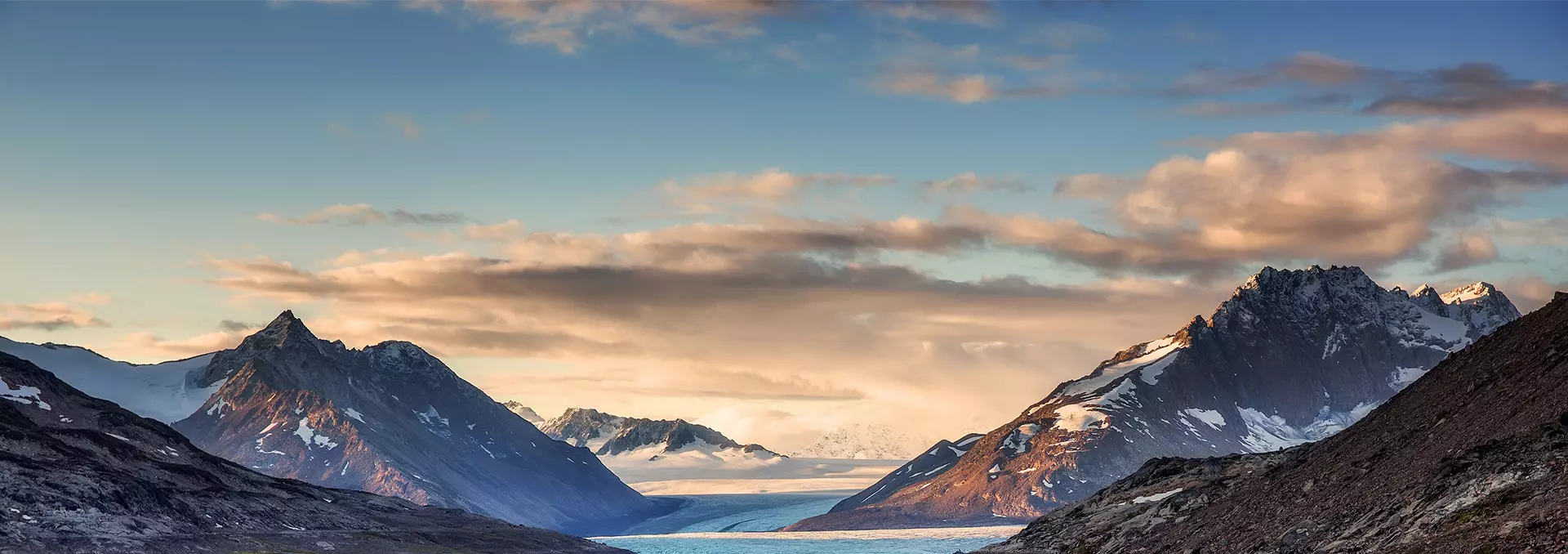
ABOUT THE AREA
Wrangell – St Elias National Park is located in the Eastern region of South-central Alaska and is the largest National Park in the country! Six times the size of Yellowstone NP, WSENP encompasses over 20,000 square miles of mountain wilderness – that’s over 50,000 square kilometers, or 25% larger than the country of Switzerland! Four mountain ranges, the Chugach, Wrangell, St. Elias and Nutzotin, converge here in what is often referred to as the “Mountain Kingdom of North America.” The unique positioning of the Park and the high altitudes it contains make it a hot spot, or should we say “cold spot” for glaciers! Over a third of the huge area of WSENP is covered by glacial ice!
Wrangell - St. Elias National Park
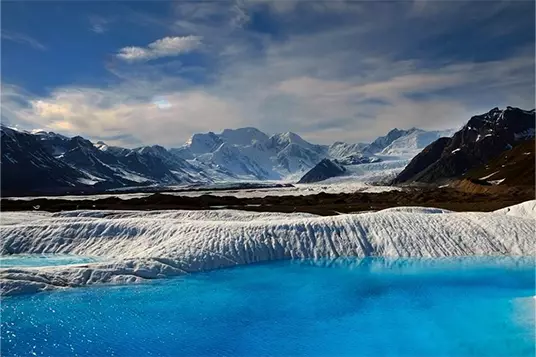
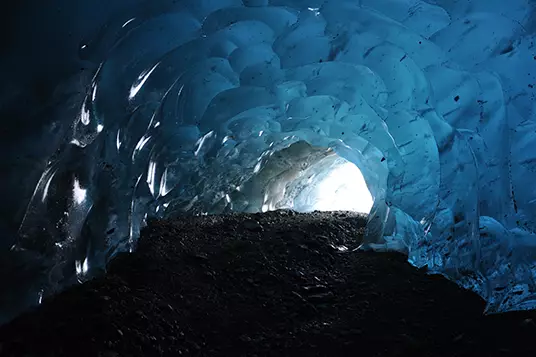
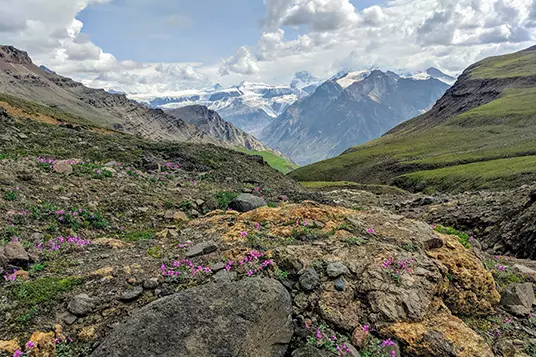
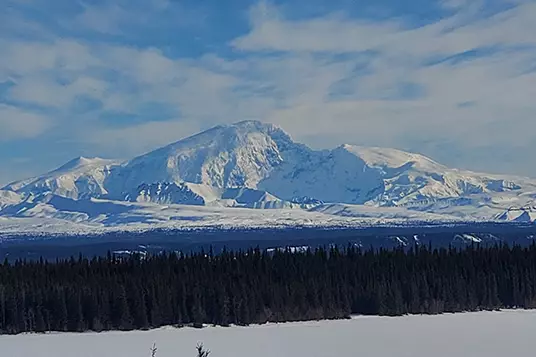
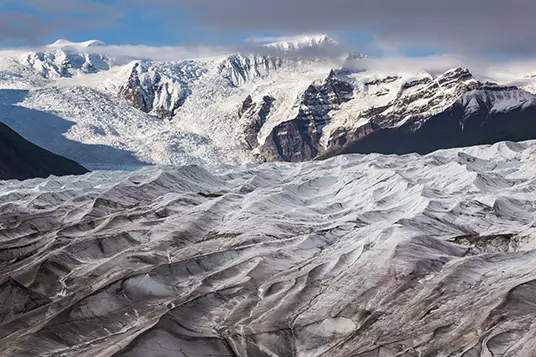
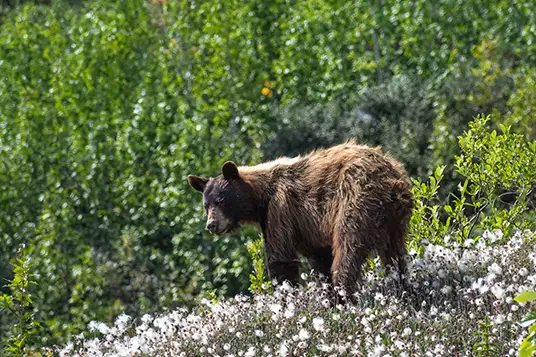
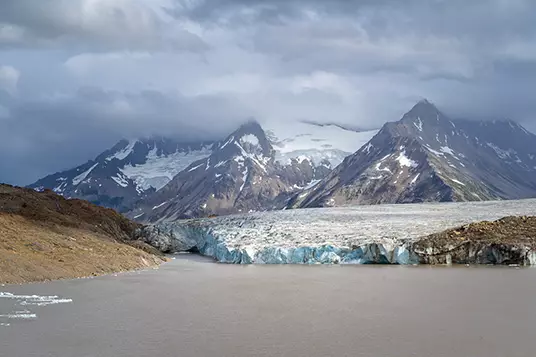
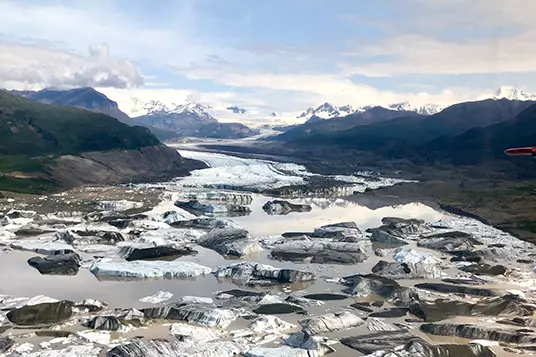
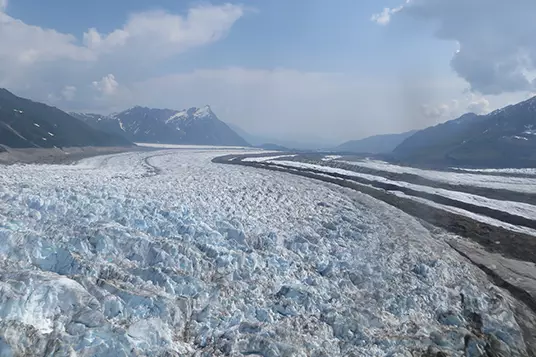
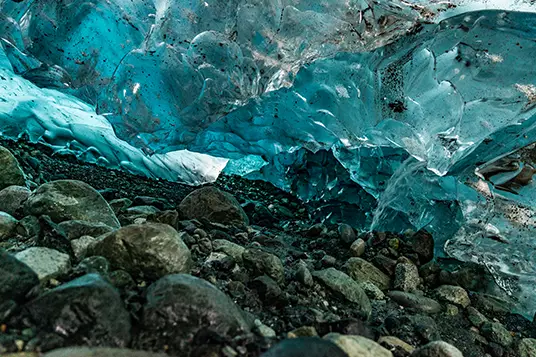
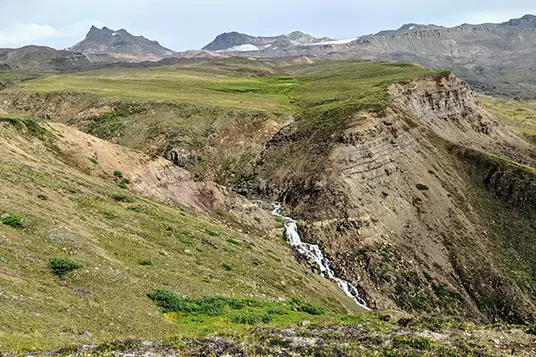
Largely undeveloped, the Park mostly consists of the true wilderness of its backcountry terrain. Almost nowhere else in the world can visitors experience a completely raw landscape, untouched by human contact. Enormous glacial landscapes and spectacular mountain vistas reward backcountry adventurers.
At the center of the Park and 60mi down a dirt road, lie the historic towns of McCarthy and Kennecott. Several groomed trails are available for hikers, including the popular Root Glacier Trail, allowing easy access to the white ice of the nearby Root Glacier. Many historic buildings and artifacts remain well-preserved in the National Historic Landmark of the townsite of Kennecott and delight any history buff. The staging ground for the most epic adventures in Alaska, this small community welcomes visitors to its authentic bush lifestyle.
On the North side of the Park, a 20mi dirt road leads to the small community at Nabesna, the site of an early-1900s mining operation. Maintained trails allow access for hikers and hunters into the Nutzotin and Mentasta Mountains.
HIGHLIGHTS
- Largest national park in the United States.
- Largest wilderness area in the National Wilderness Preservation System.
- Mt. St. Elias, at 18,008 feet (5.5km), is the second-highest peak in the United States.
- Mt. Wrangell, at 14,163 feet (4,316m), is one of the largest active volcanoes in North America.
- Nine of the 16 highest peaks in the United States.
- Malaspina Glacier, larger than the state of Rhode Island, is the largest non-polar piedmont glacier in North America.
- Nabesna Glacier, at approximately 80 miles (128km), is the longest non-polar valley glacier.
- The Hubbard Glacier is one of the largest and most active tidewater glaciers in North America.
- In 1978, the United Nations recognized Wrangell-St. Elias National Monument in combination with its Yukon neighbor, Kluane National Park, as an international World Heritage site…the first bi-national designation. Glacier Bay National Park in Alaska and Tatshenshini-Alsek Provincial Park in British Columbia were added in 1993. Together, these four units include 24.3 million acres (almost 10 million hectares), one of the largest internationally protected ecosystems on the planet!
If you’d like to learn more about Wrangell St. Elias National Park, visit the park website.
McCarthy/Kennecott
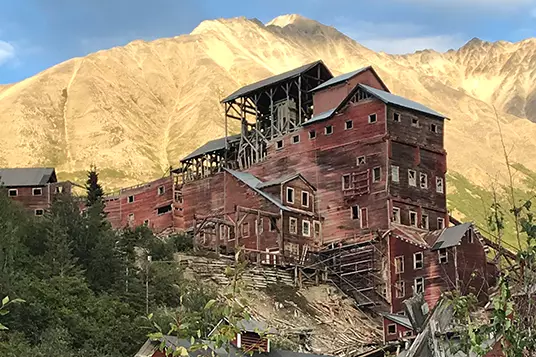
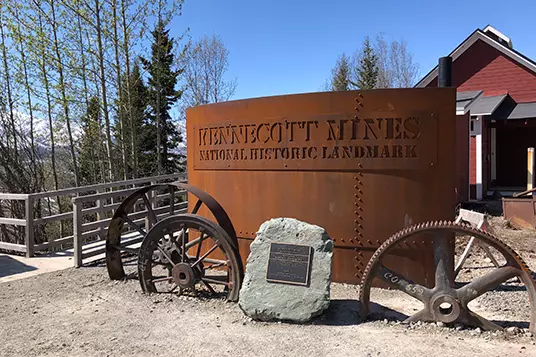
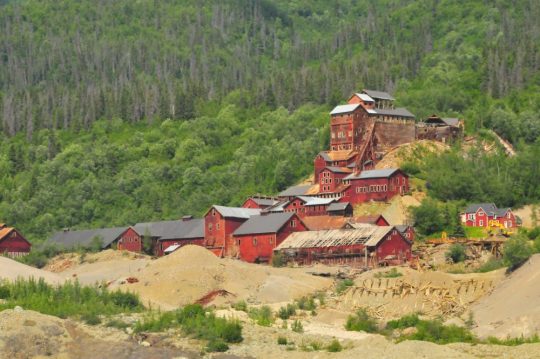
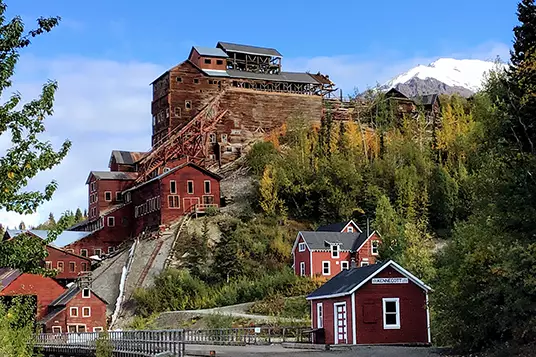
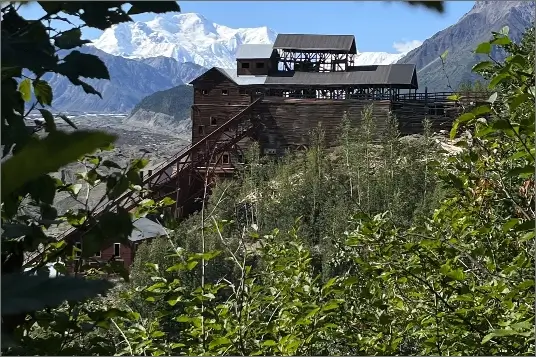
McCarthy and Kennecott, Alaska are two small communities nestled in the heart of the Wrangell-St. Elias National Park. The two towns are 4.5 miles apart and can be accessed by a 62mi dirt road that begins in the town of Chitina, or by small aircraft.
Today, Kennecott is more of a ghost town and McCarthy a true Alaskan frontier bush community, but it wasn’t always that way…
At the turn of the last century, Alaska and the Yukon were flooded by prospectors looking for the next big gold strike, or just about any precious metal they could stake a claim on. A couple of lucky prospectors discovered what became known as the richest copper oar vein in history, running high in the mountains of this remote glacial valley. After constructing a railroad to support the venture, a mining operation, the Kennecott Copper Corporation, sprung up and began a streak of incredibly successful production.
Kennecott was not a “real town”, but rather a self-sustaining “work camp” so eventually a small community of McCarthy began amassing support at the railroad turnaround station to meet the growing needs of the workers of Kennecott. McCarthy was quite a miners’ and railroaders’ town, with all the – ahem – “entertainment” a young man on the frontier might require. Restaurants, pool halls, hotels, saloons, a dress shop, a shoe shop, a garage, a hardware store, and a thriving red-light district all popped up to provide services to the more than 800 people that lived in the area.
Today, the census records approximately 50 true locals with the summer population swelling to several hundred as seasonal workers, vacationers, and tourists come from all over the world come to experience this incredible place. The eclectic “end of the road” community that forms the heart of the local population has been gathering here since the 60s, homesteading on the frontier and living a true bush lifestyle, completely off the grid.
The well-preserved ghost town of Kennecott overlooks the Kennicott Glacier and guests can enjoy quiet evenings, immersed both in history and in wilderness. McCarthy’s raucous past lives on in spirit and guests can enjoy a surprisingly busy nightlife of live music, open mic night, trivia, local events, community softball and of course, drinks at the 1 bar in town!
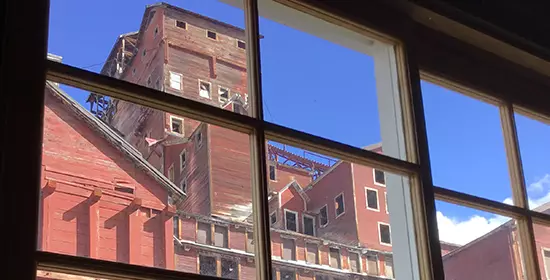
What is there to do in the area
The highlights of our area that set us apart from other areas in Alaska:
- Glaciers
- History
- Backcountry
- Authentic bush community
The #1 activity in the area is our Historic Mill Town Tour! Providing you with context for the rest of your stay, it’s only 2 hrs long and easy to squeeze into any itinerary!
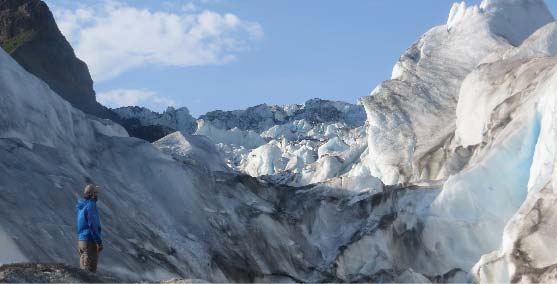
Adventures in the Park
We offer adventure day tours staged right out of McCarthy and Kennecott that provide you with access to both the backcountry and the glaciated terrain of this vast wilderness – day trips are the best way to create a multi-sport itinerary! If you’d like to truly immerse yourself in the wilderness, we recommend you look into our multi-day trip – there’s something for every type of adventurer!
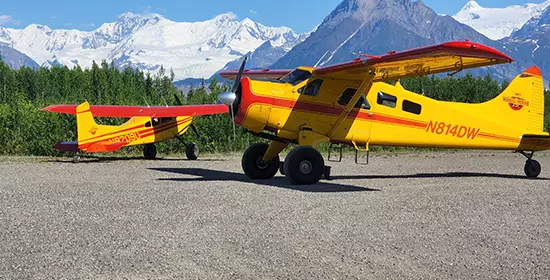
Logistics
FAQ
The condition of the road varies during the course of the Summer Season (May-September), and travel is not advised during the Winter Months (November-April). If you do choose to drive down the McCarthy Road in the Summer you should keep the following in mind:
It is a 60-mile gravel road.
There are many potholes and frost heaves along the way.
There are narrow sections of road and soft shoulders.
Sharp rocks and old railroad spikes can cause flat tires, you should always travel with a spare.
Landslides have been known to occur on certain sections of the road, blocking progress.
Travel is slow going, and you shouldn’t go any more than ~35 miles per hour.
Always allot more time to travel the road than you think you need, we recommend 2-3 hours from Chitina (where the road begins) to McCarthy.
If you have questions about alternative transportation options in and out of the McCarthy/Kennecott Area, you can refer to our Transportation Page.
There is no public WiFi in the area. We highly recommend that you enjoy the chance to unplug, unwind, and explore the beautiful Kennicott Valley! However, if you do need WiFi, many lodging options in the Kennicott Valley provide internet for their guests – check with your lodging host if you need WiFi.
The best time to visit McCarthy/Kennecott and the Wrangells is June-September. This is when most of the backcountry is accessible, the National Park Service operations are running and most businesses in town, including lodging accommodations and restaurants, are open.
We start our mountaineering trips in early May, but most of our other tours are available starting Memorial Day weekend!
At the end of May it is still very quiet in town and can be a great time to avoid the crowds, however, it is still a little chilly, the bugs are just starting to come out and no fly-in destinations are accessible for hiking and backpacking. The sun sets really, really late and only for a brief time.
June remains a little quieter as the season builds up but by mid-June the wildflowers start coming out and the weather warms up significantly. Most backcountry strips become accessible toward the end of the month. The mosquitoes start to get thick toward mid-month but are easy to avoid on the glacier or while moving around. The sun won’t set until the end of August, so enjoy the land of the midnight sun!
July is considered prime-time in the Wrangells, with the warmest and typically sunniest weather and wildflowers in full bloom! It also means that this is the most popular time of year to visit so you may see more people around town than usual, especially around the 4th of July, Independence Day, holiday. July is also our heaviest mosquito time but the bugs are quite easy to avoid and not that bad, altogether. All backcountry destinations are usually accessible all month.
August continues all the joys of July, however, the mosquitoes die down significantly! The weather tends to be a bit more fickle this month, but it’s still a very pop[ular time of year to visit. Toward the very end of the month, you can catch the leaves and tundra changing colors, getting ready for fall and sun finally starting to set.
In September, the fall colors are out and they are incredible! The mosquitoes are gone too! This month can be a little cooler so you’ll want to pack some warmer layers, and most backcountry strips are still available to fly in and out of. It’s much quieter around town as the season winds down, and if you’re lucky you may catch a glimpse of the Northern Lights!
All that said, remember that Alaska’s mountain weather changes frequently and can surprise even an experienced outdoorsman! It’s been known to snow in July, not rain at all, or rain almost every day of the summer, so be prepared for just about anything!
It is also possible to visit the park in the “winter months” however please be advised that access is difficult and little support is available. We do not provide tours, shuttles, trip planning or any other kind of support or services for personal trips to the Park during the winter.
Regardless of how you arrive in McCarthy, be advised that no outside vehicles are permitted within the town, so don’t plan on being able to drive yourself around. Uber and taxi services are a laughable concept out here in the bush…you’ll see!
Within the towns of Kennecott and McCarthy, all local businesses and points of attraction are within walking distance.
To get between Kennecott and McCarthy most people ride the local Copper Town Shuttle (pricing and schedule change seasonally), however, you can also walk or bike the 4.5mi between the two towns.
The Footbridge at the end of the McCarthy Road is about a 20min walk from McCarthy. The Copper Town Shuttle also offers service to the Footbridge on a regular schedule.
Most local lodging hosts will provide transportation for check-in and check-out so you should be able to get to your accommodations from either the Footbridge if you’re driving in or from the airstrip if you’re flying in – check with your host for more details.
If you’re doing an activity with us, chances are we provide transportation! Check with us if you are unsure if transportation is provided for your activity.